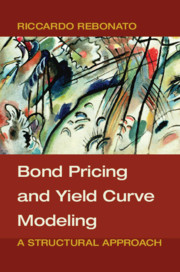Book contents
- Frontmatter
- Dedication
- Contents
- Acknowledgements
- Symbols and Abbreviations
- Part I The Foundations
- Part II The Building Blocks: A First Look
- Part III The Conditions of No-Arbitrage
- Part IV Solving the Models
- Part V The Value of Convexity
- 20 The Value of Convexity
- 21 A Model-Independent Approach to Valuing Convexity
- 22 Convexity: Empirical Results
- Part VI Excess Returns
- Part VII What the Models Tell Us
- References
- Index
21 - A Model-Independent Approach to Valuing Convexity
from Part V - The Value of Convexity
Published online by Cambridge University Press: 25 May 2018
- Frontmatter
- Dedication
- Contents
- Acknowledgements
- Symbols and Abbreviations
- Part I The Foundations
- Part II The Building Blocks: A First Look
- Part III The Conditions of No-Arbitrage
- Part IV Solving the Models
- Part V The Value of Convexity
- 20 The Value of Convexity
- 21 A Model-Independent Approach to Valuing Convexity
- 22 Convexity: Empirical Results
- Part VI Excess Returns
- Part VII What the Models Tell Us
- References
- Index
Summary
I have not failed. I have just found 10,000 ways that won't work.
– Thomas A. EdisonI refuse to recognize that there are impossibilities. I cannot discover that anyone knows enough about anything on this earth definitely to say what is and what is not possible.
– Henry FordTHE PURPOSE OF THIS CHAPTER
The ‘value of convexity’ (ie, the difference between the market yields and the yields that would prevail in the absence of convexity) is substantial, as Figure 21.1 clearly shows. Yet one finds in the literature relatively little discussion of the fair value of convexity.
Of course, speaking of fairness makes reference to a modelling approach, and, probably herein lies the problem: in studies of this type, one always tests a joint hypothesis, that the convexity is correctly priced and the model correctly specified. Given the great uncertainty in model specification, any possible rejection must therefore always include a caveat of particularly lurid health warnings.
It is for this reason that we adopt in this chapter a quasi-model-agnostic approach. By this we mean that we do place ourselves in an affine-modelling framework, but we make our results as independent as possible from the specifics of any affine model (such as the number of factors, or the nature of the state variables – latent, specified, yield-curve-based, macroeconomic, etc). We
only require that some affine model should exist, capable of recovering themarket yield curve and yield covariance matrix with the precision required by our study. We show in Chapter 33 that at least one such model exists, and we then rely in our reasoning on a simple equivalence result that we state and briefly prove in Section 2.
We put our quasi-model-agnostic methodology to the test by examining whether it is possible to systematically make money by means of a trading strategy based on immunizing against the exposure to ‘level’ and ‘slope’ risk, on estimating the yield volatility over the next time interval, and on comparing this estimate with the volatility ‘implied’ by the curvature in the yield curve. On purpose, we do not employ a sophisticated volatility estimate, because we want to ascertain whether easily available information about future volatility is correctly embedded in the shape of the yield curve.
- Type
- Chapter
- Information
- Bond Pricing and Yield Curve ModelingA Structural Approach, pp. 371 - 390Publisher: Cambridge University PressPrint publication year: 2018



